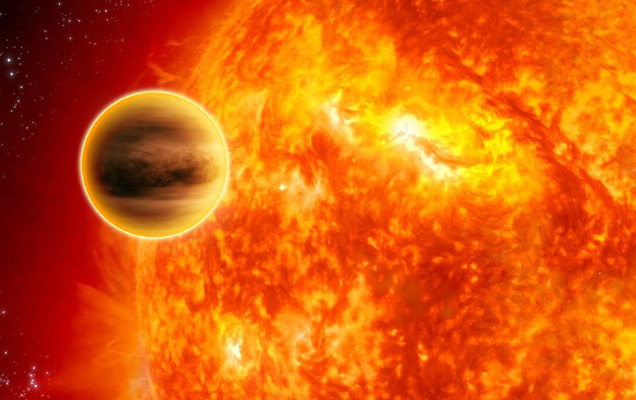The 500 and more known exoplanets are plenty weird and wonderful, thanks in large part to many of them orbiting perilously close to their stars. The extreme heating can drive supersonic winds and melt rocky surfaces. But even such blistering temperatures can’t account for Jupiterlike exoplanets that swell to diameters far larger than can be explained by any heating from their stars. Now researchers have found signs that inexplicably large exoplanets are generating their own electrical currents that heat their interiors. In a paper posted last week on arXiv.org, researchers found a tendency for known exoplanets to be larger than expected if their stars have driven their outer temperatures to at least 1500K. That’s the temperature needed to ionize trace elements like sodium and potassium and make the planet’s gases able to conduct an electrical current. High-speed winds can then carry the ionized gas through the planet’s magnetic field to generate loops of current extending deep into the interior. Resistance heating there like that in a toaster or electric oven can then heat the whole planet and keep it puffed up.

